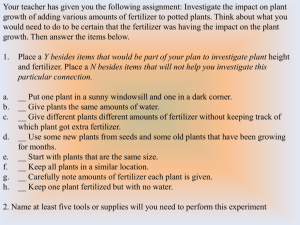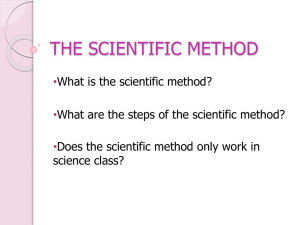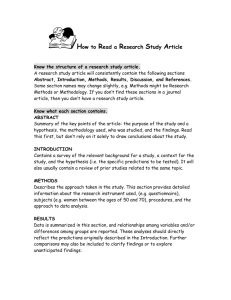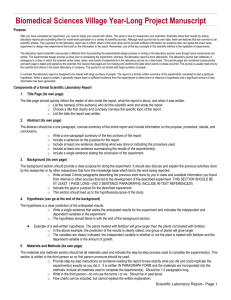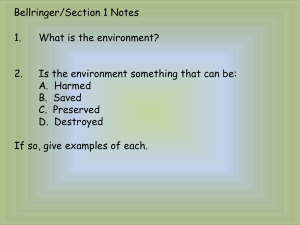HowWriteScientificLabReport
advertisement
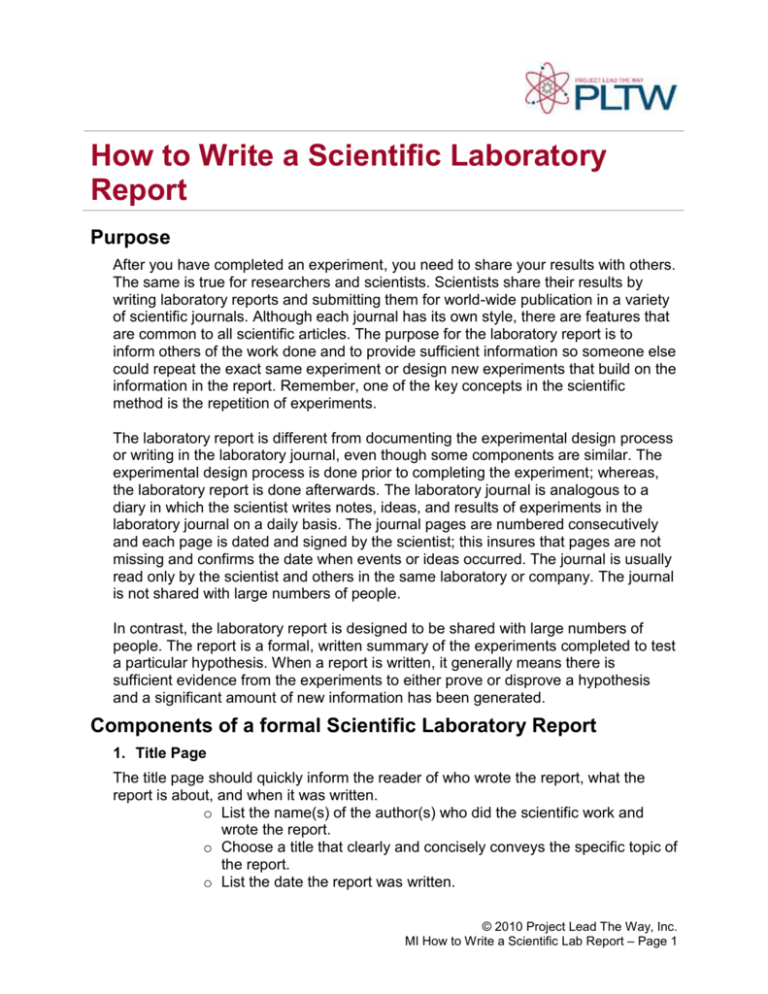
How to Write a Scientific Laboratory Report Purpose After you have completed an experiment, you need to share your results with others. The same is true for researchers and scientists. Scientists share their results by writing laboratory reports and submitting them for world-wide publication in a variety of scientific journals. Although each journal has its own style, there are features that are common to all scientific articles. The purpose for the laboratory report is to inform others of the work done and to provide sufficient information so someone else could repeat the exact same experiment or design new experiments that build on the information in the report. Remember, one of the key concepts in the scientific method is the repetition of experiments. The laboratory report is different from documenting the experimental design process or writing in the laboratory journal, even though some components are similar. The experimental design process is done prior to completing the experiment; whereas, the laboratory report is done afterwards. The laboratory journal is analogous to a diary in which the scientist writes notes, ideas, and results of experiments in the laboratory journal on a daily basis. The journal pages are numbered consecutively and each page is dated and signed by the scientist; this insures that pages are not missing and confirms the date when events or ideas occurred. The journal is usually read only by the scientist and others in the same laboratory or company. The journal is not shared with large numbers of people. In contrast, the laboratory report is designed to be shared with large numbers of people. The report is a formal, written summary of the experiments completed to test a particular hypothesis. When a report is written, it generally means there is sufficient evidence from the experiments to either prove or disprove a hypothesis and a significant amount of new information has been generated. Components of a formal Scientific Laboratory Report 1. Title Page The title page should quickly inform the reader of who wrote the report, what the report is about, and when it was written. o List the name(s) of the author(s) who did the scientific work and wrote the report. o Choose a title that clearly and concisely conveys the specific topic of the report. o List the date the report was written. © 2010 Project Lead The Way, Inc. MI How to Write a Scientific Lab Report – Page 1 2. Abstract The abstract should be a one paragraph, concise summary of the entire report and include information on the purpose, procedure, results, and conclusions. o Write a one-paragraph summary of the key portions of the report. o Include a sentence on the purpose for the report. o Include at least one sentence describing what was done or indicating the procedure used. o Include at least one sentence summarizing the results of the experiment(s). o Include a single sentence stating the conclusion of the experiment. 3. Background The background section should provide a clear purpose for doing the experiment. It should also discuss and explain the previous activities done by the researcher or by other researchers that form the knowledge base which led to the work being reported. o Write two or three paragraphs describing the previous work done by you in class and available information you found from Internet or other sources that led to the development of the described experiment. o Indicate the goal or purpose for the described experiment. 4. Hypothesis The hypothesis is a clear prediction of the anticipated results. o Write a single sentence that states the anticipated results for the experiment and indicates the independent and dependent variables in the experiment. Example of a well-written hypothesis: The plants treated with fertilizer will grow larger than the plants not treated with fertilizer. o In the above example, the prediction of the results is clearly stated: one group of plants will grow larger. o The variables are clearly indicated: the independent variable is whether or not the plant is treated with fertilizer and the dependent variable is the amount of growth. 5. Materials and Methods The materials and methods section should list all materials used and indicate the step-by-step process used to complete the experiment(s). This section is written in the third person so no personal pronouns should be used. o List all materials used to complete the experiment(s). o Provide step-by-step instructions so someone reading the report knows exactly what you did and could replicate the experiment(s) exactly as you did it. o Write in the third person—do not use the terms I or we. 6. Results © 2010 Project Lead The Way, Inc. MI How to Write a Scientific Lab Report – Page 2 The results section should fully and clearly indicate the actual observations, measurements, or other results to the experiments. It should be written in paragraph form and use charts, diagrams, pictures, or other graphics as necessary for clarity. o Write at least one paragraph describing the actual results. o Include the actual data and indicate the units of all measurements. o Use graphs, charts, pictures, or other graphics to support your description of the results. o Do not make explanations or interpretations of the results in this section. 7. Discussion The discussion section should clearly and completely explain and interpret the results of the experiment(s). The analysis should refer back to the background section of the report and discuss how the results reported in the previous section support, refute, or add to the existing knowledge. If the results were unexpected or seem inaccurate, then an explanation of any possible errors or problems with the experimental method or procedure should be included, along with suggestions on how to avoid those errors or problems in the future. o Write at least one paragraph explaining and interpreting the results. o Include a reflection on the Background section indicating how the results support, refute, or add to information presented as background. o Discuss and explain any possible errors in the results. o Suggest improvements to eliminate any errors that occurred. o Suggest further experiments that expand on the work being reported. 8. Conclusion The conclusion is a single sentence stating the final summary of the report. It should be directly related to the hypothesis. o Write a clear, single sentence that summarizes the report and is directly related to the hypothesis. Example of a conclusion statement: The plants treated with fertilizer grew an average of four inches taller than the plants not treated with fertilizer. 9. Citations The citations section should list all print, Internet, or other resources used to gain information for the report. Each citation should be complete and use the proper format. o Use proper scientific documentation to indicate the sources of all information used in the report. © 2010 Project Lead The Way, Inc. MI How to Write a Scientific Lab Report – Page 3



